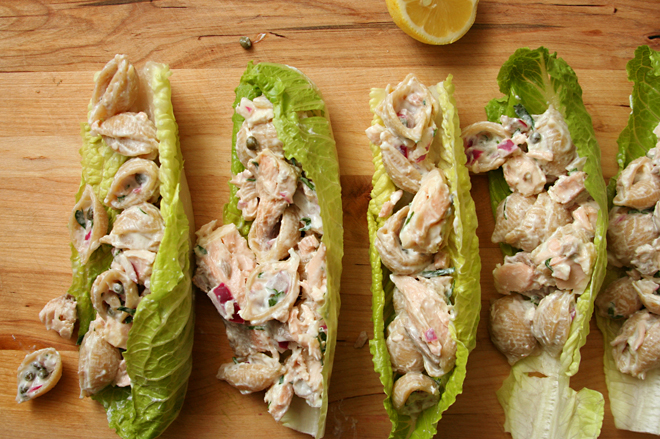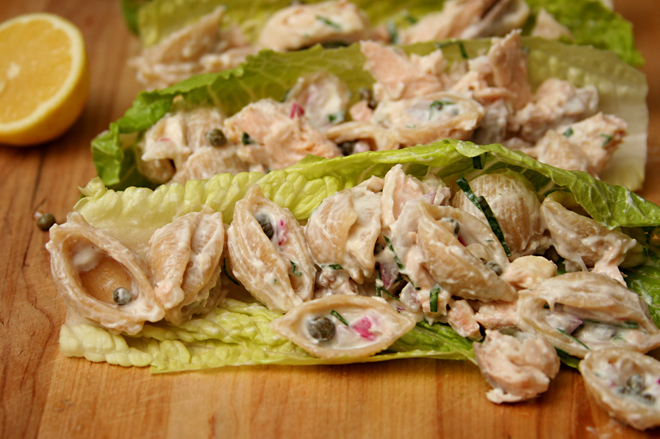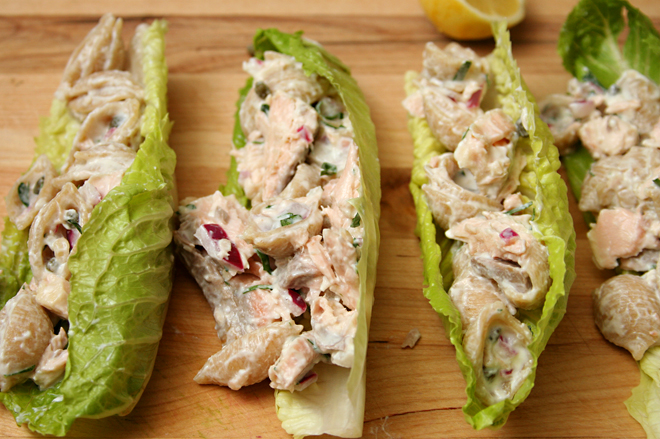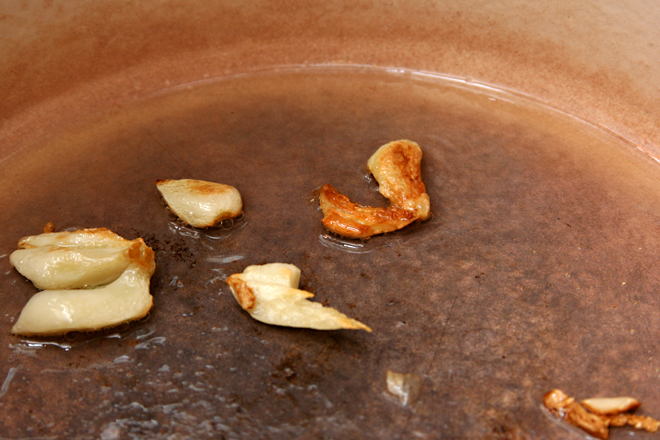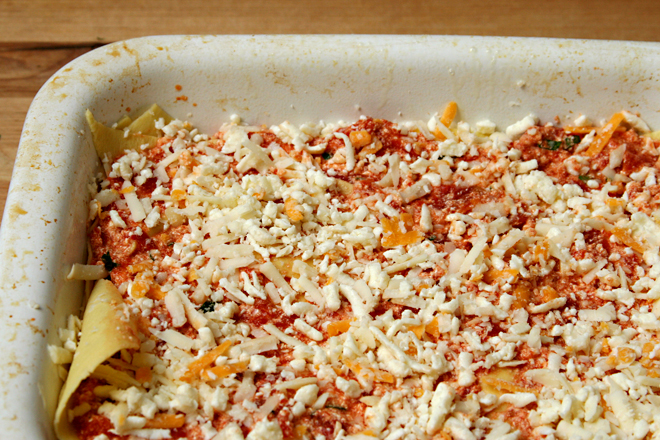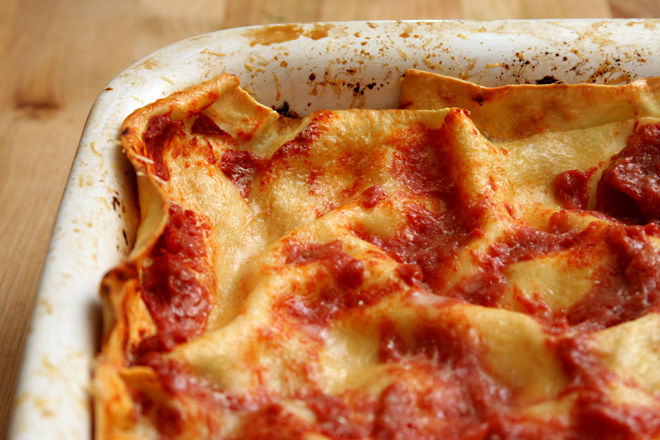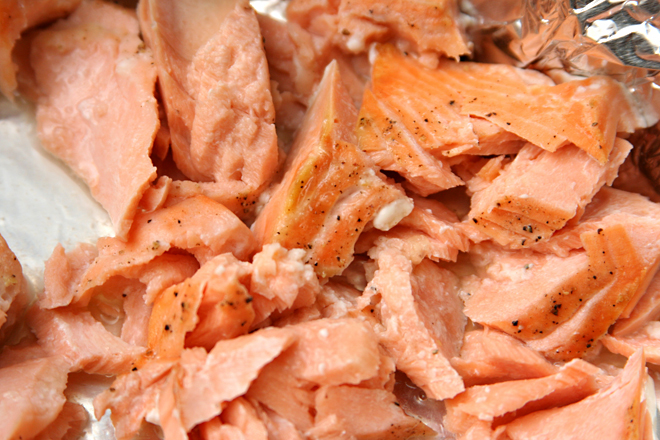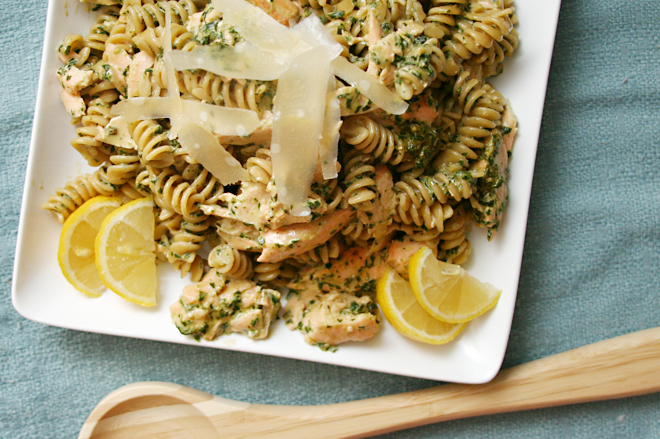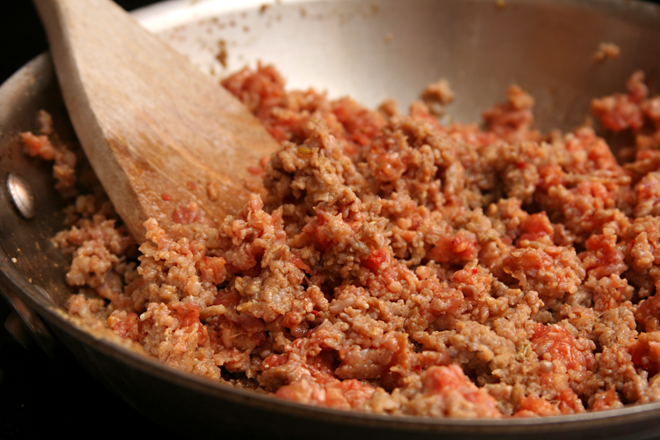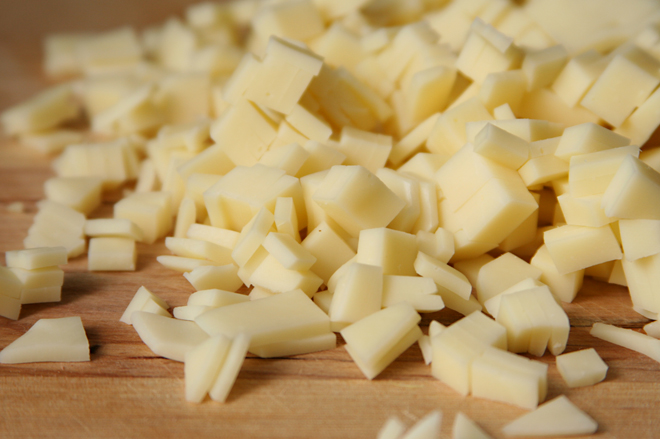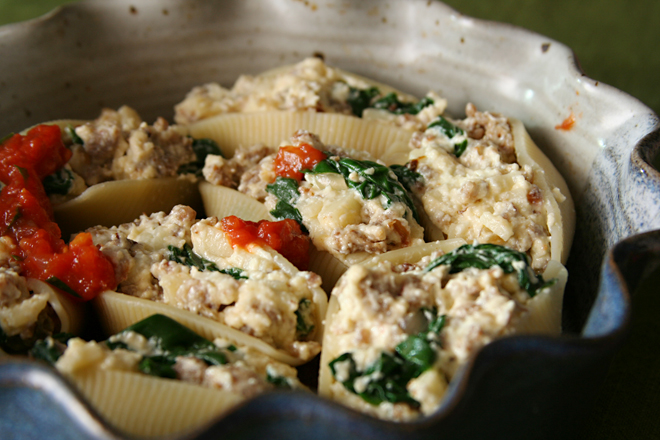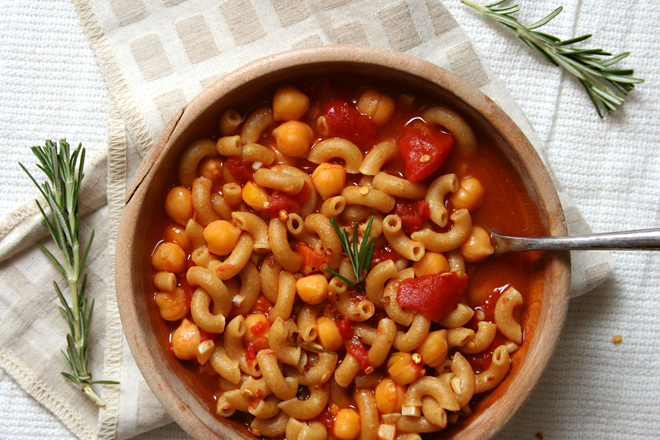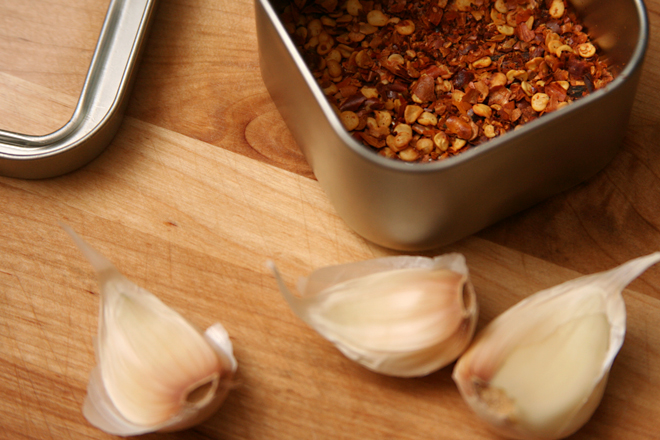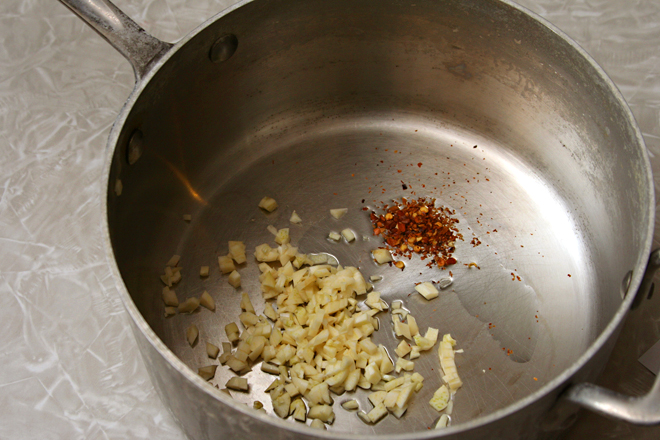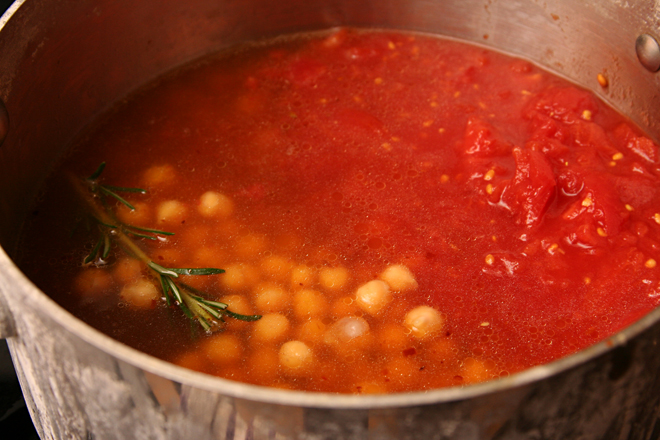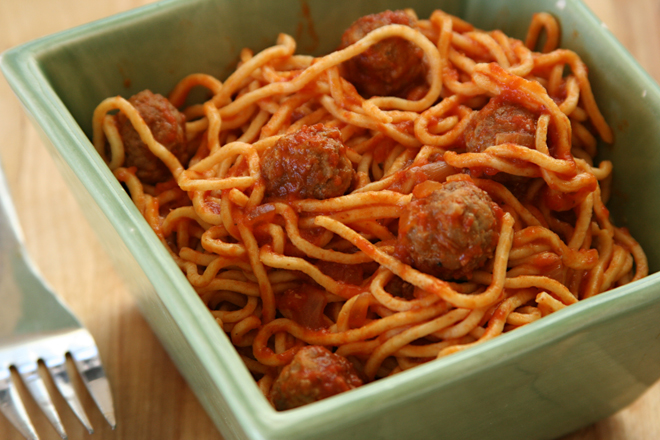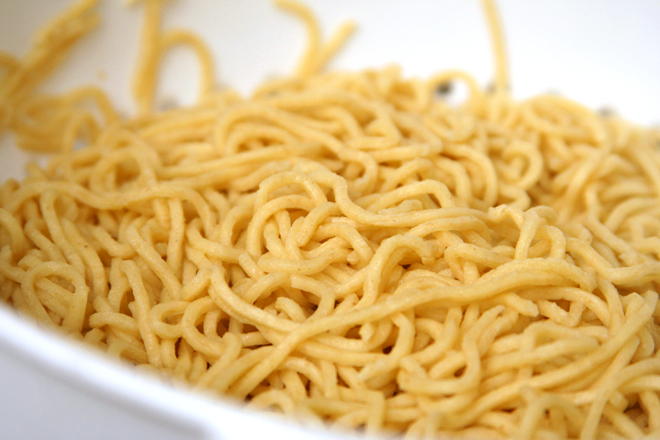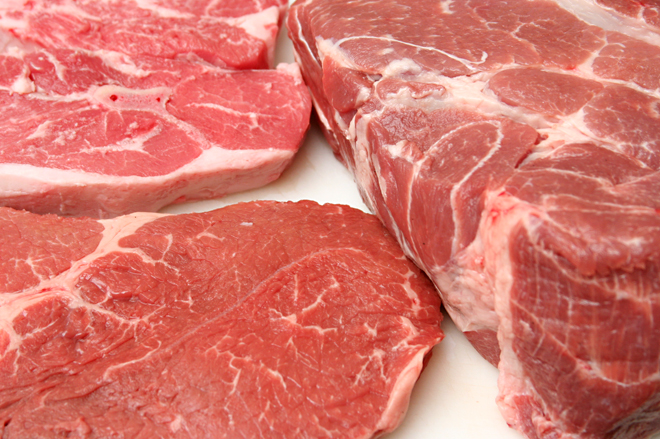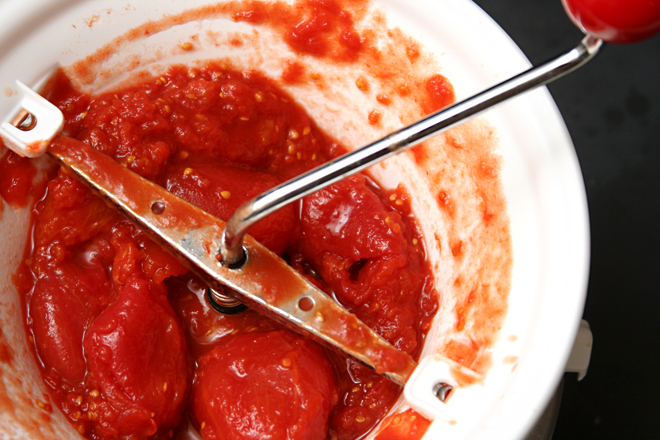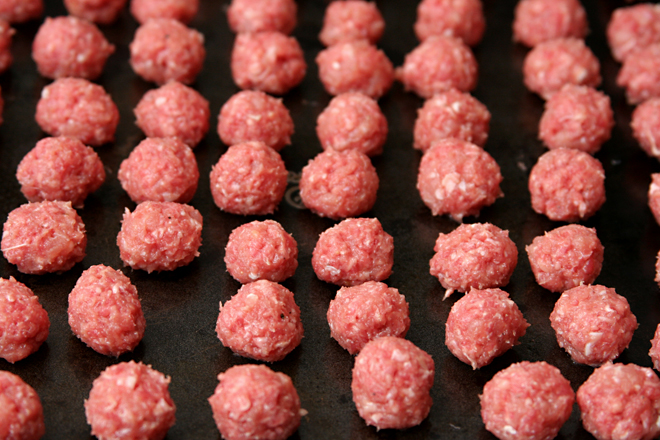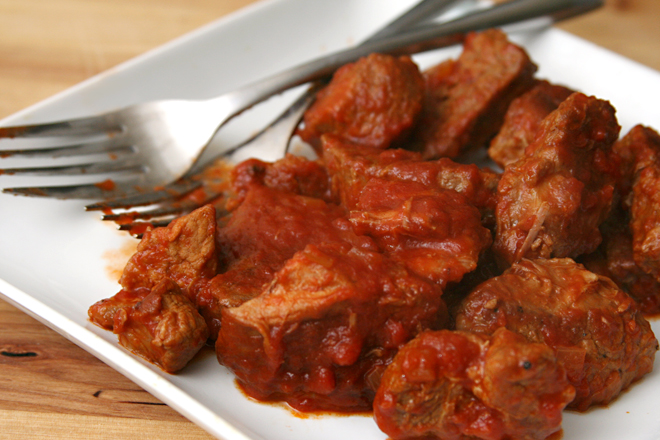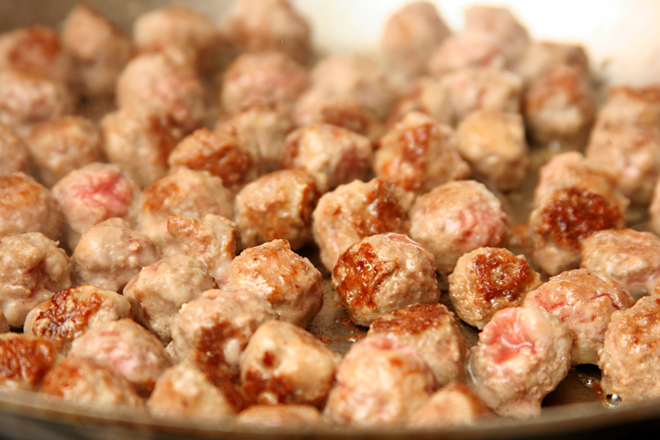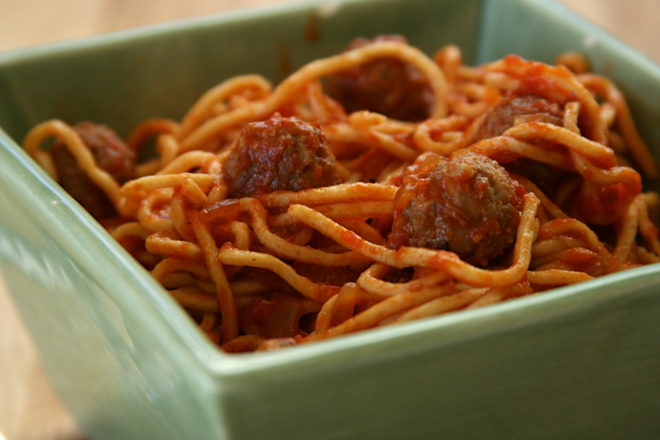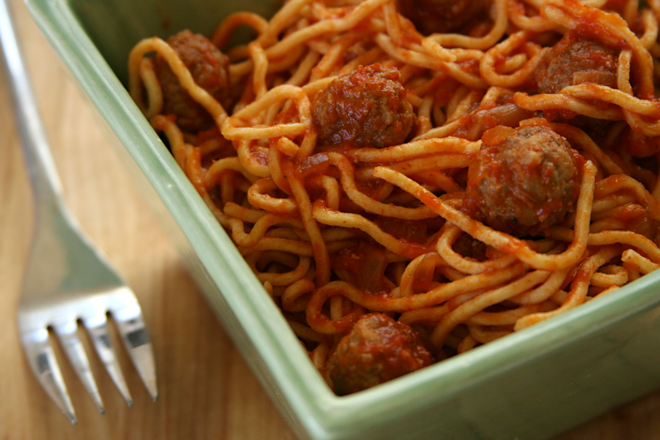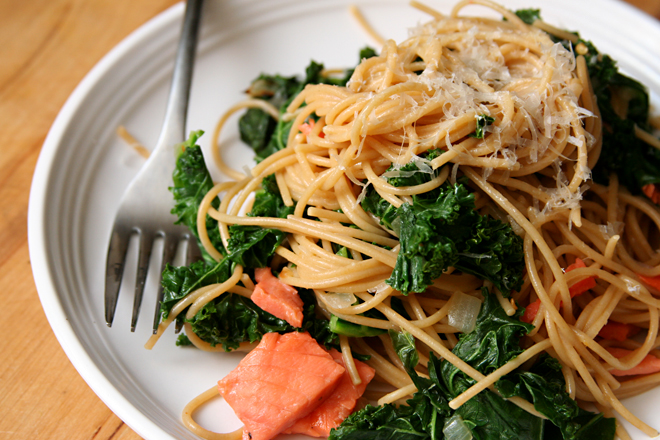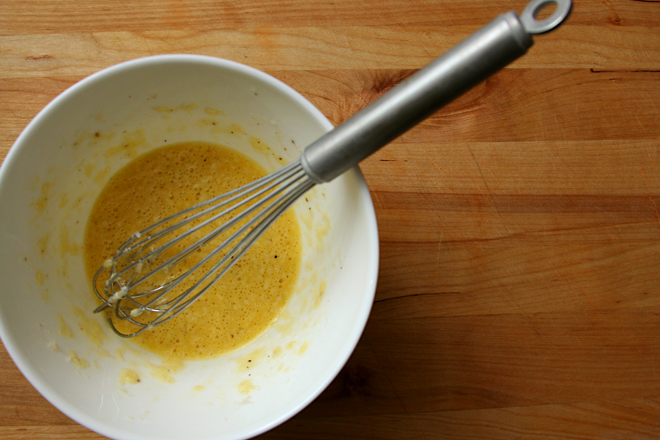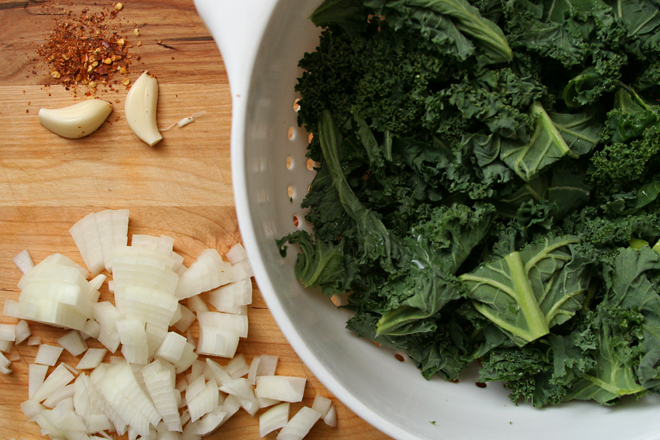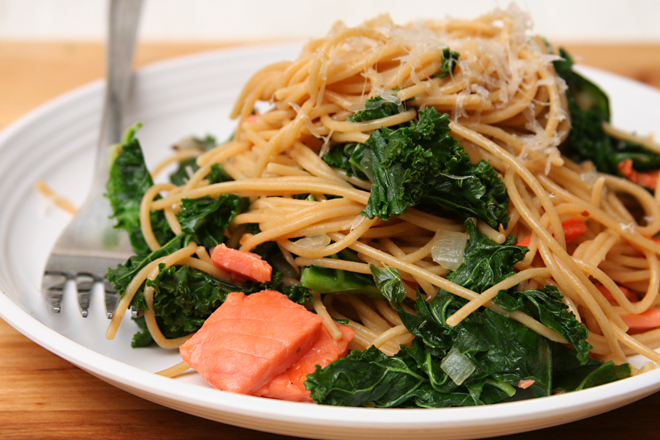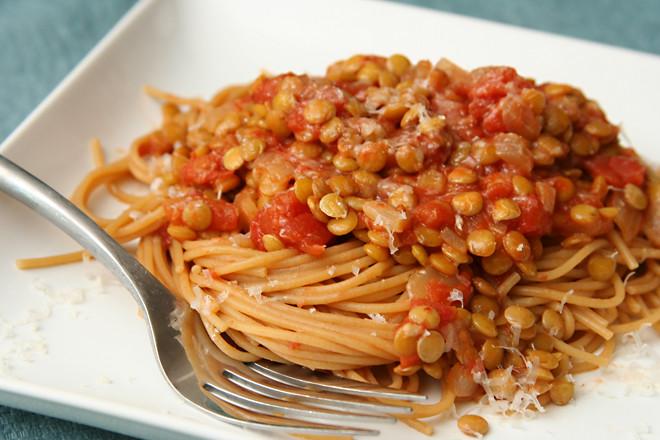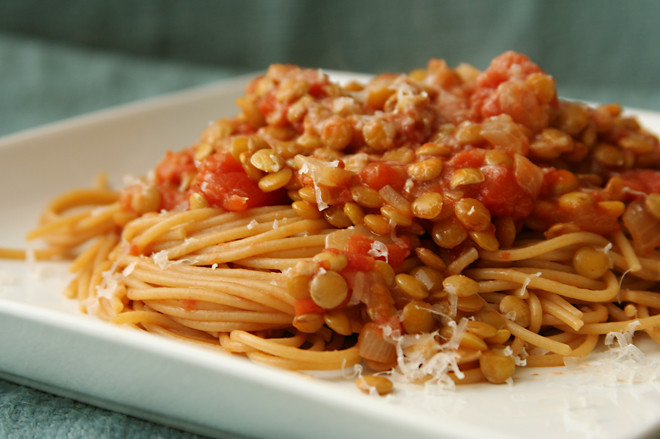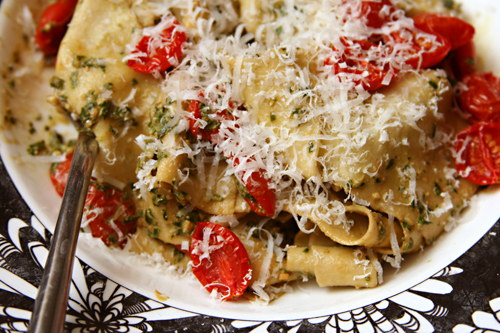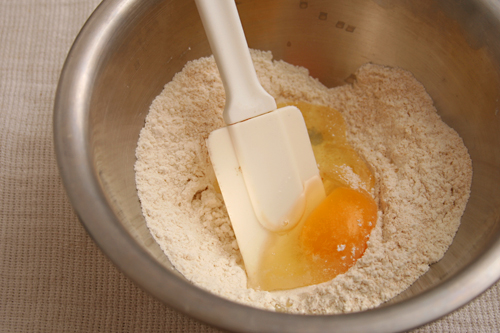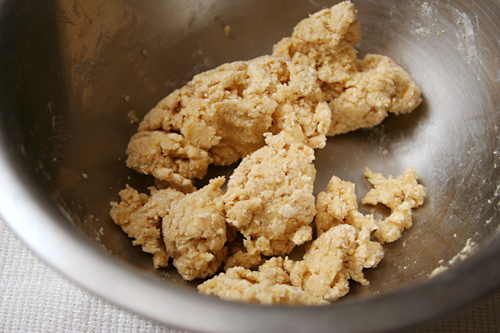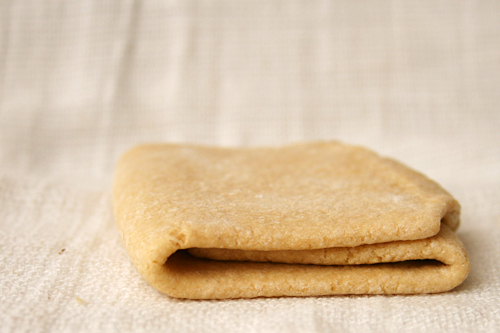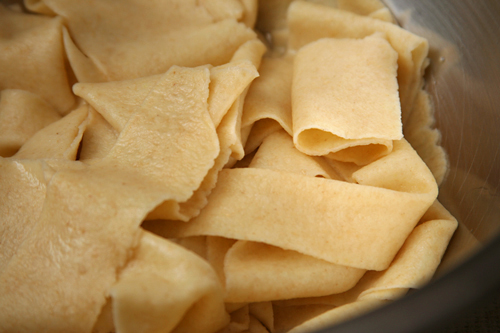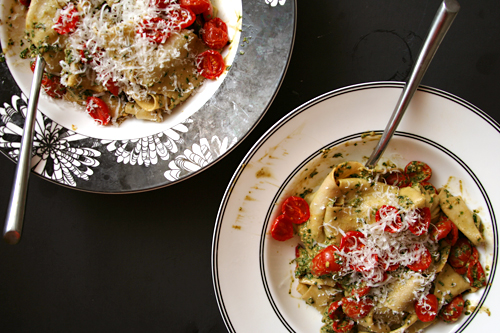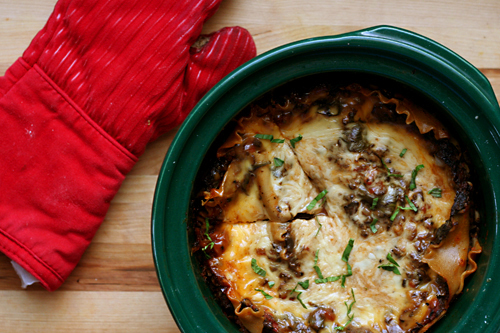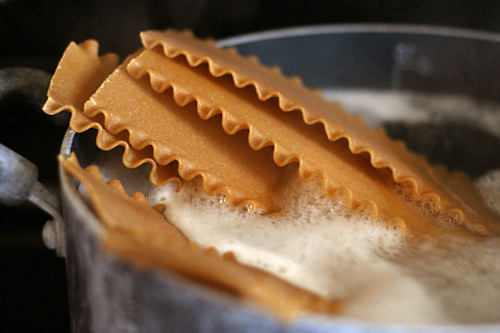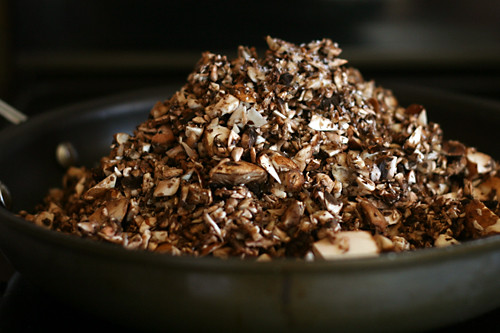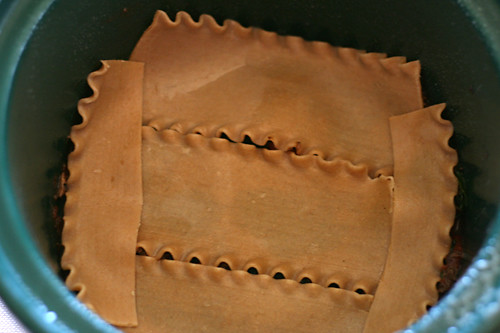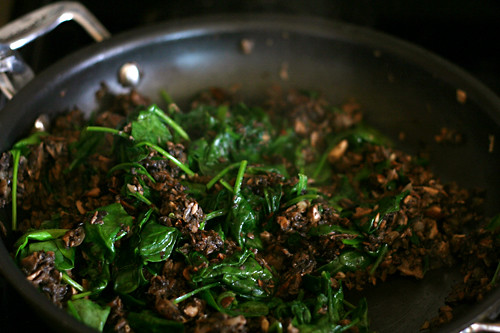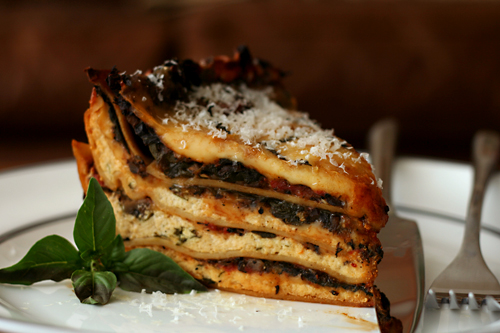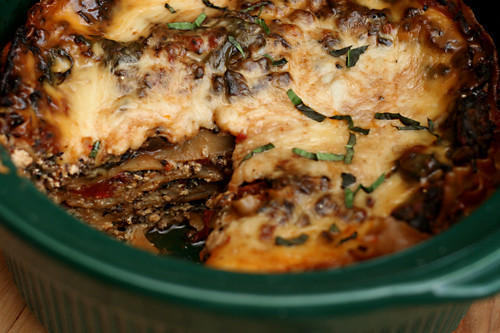It’s a recipe that doesn’t require butter and flour! These have been few and far between around this joint lately (and an unscheduled break didn’t help matters), or at least it would seem that way if your only window into my kitchen was through this blog. We’ve actually been eating dinners that are just as healthy as always (in other words, very healthy on the weekdays, decidedly less so on weekends), but while I was going through my excessive baking phase for a few weeks, I stuck to meals that were familiar and easy, so cooking dinner would minimize the time I had to spend apart from butter and sugar.
Now that I’ve settled down and slowly stepped away from the mixer, I’m more willing to try new recipes after work. This one was a nice way to get out of the salmon rut I’ve been in. I know I can’t go wrong with pasta and a yogurt-based sauce. This one also has several other ingredients I love, like capers, mustard, and red onion. Since there was no cooking fat in the recipe, I indulged a bit and stirred in some mayonnaise to the sauce in addition to the Greek yogurt.
I keep trying to serve things in romaine leaves, and it keeps turning out to be a mess. But there are worse things than tangy bites of salmon and pasta falling out of their lettuce cups. There’s no butter or sugar and I didn’t get to use the mixer, but it’ll do.
One year ago: Lentil Goat Cheese Burgers
Two years ago: Soft Chocolate and Berry Tart
Three years ago: Chicken Artichoke Pesto Calzones
Four years ago: Sushi Rolls
Printer Friendly Recipe
Poached Salmon Pasta Salad (adapted from An Edible Mosaic via Prevention RD and from Cooks Illustrated’s Poached Salmon recipe)
Serves 6
2 lemons, 1 sliced ¼-inch thick, 1 juiced
3 tablespoons chopped fresh parsley leaves, stems reserved
1 small shallot, minced (about 2 tablespoons)
½ cup dry white wine
½ cup water
4 (8-ounce) salmon fillets, about 1½ inches at the thickest part
Salt
12 ounces dry pasta
½ red onion, minced
1 tablespoon capers
2 teaspoons mustard
1 cup plain Greek yogurt
2 tablespoons mayonnaise
1. Arrange the lemon slices in a single layer across the bottom of a 12-inch skillet. Scatter the parsley stems and minced shallots evenly over the lemon slices; add the water and wine. Place the salmon fillets in the skillet, skin side down on top of the lemon slices; set the pan over high heat and bring the liquid to a simmer. Reduce the heat to medium-low, cover, and cook until the sides of the salmon are opaque but the center of the thickest part is still translucent, 11 to 16 minutes. Remove the pan from the heat and carefully transfer the salmon to a cutting board. When cooled, remove the skin and cut the salmon into bite-sized chunks.
2. Meanwhile, bring a large pot of water to rolling boil over high heat. Add 1 tablespoon of salt and the pasta; cook according to the package instructions. Drain.
3. Combine 2 tablespoons lemon juice, ½ teaspoon salt, the mustard, parsley leaves, capers, yogurt, and mayonnaise in a large bowl. Fold in the pasta and salmon. Serve immediately or chill for several hours.
